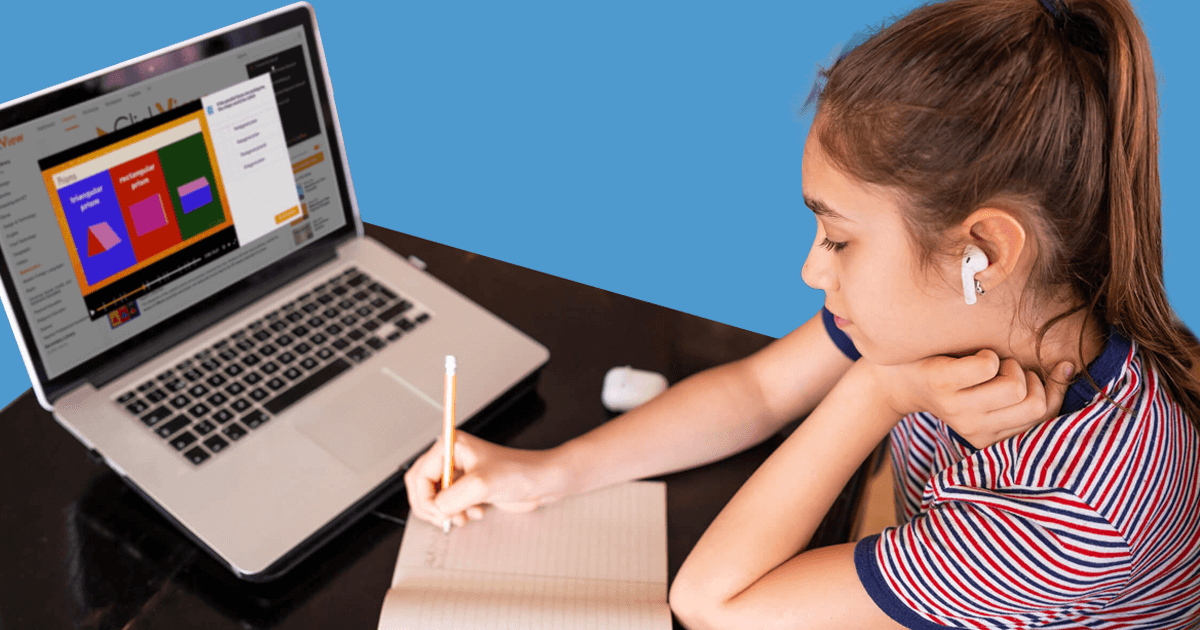Are you homeschooling your teen during COVID-19?
We find ourselves living in pretty interesting times. Like many other households around the country and the world, you’re probably now working, parenting and homeschooling secondary school-aged children from home. And wondering exactly how it’s all supposed to work. To help keep your sanity intact and teenagers learning, while you navigate work commitments, here are seven ideas to help you strike some balance amongst it all.
1. Set realistic expectations
First things first. Cut yourself and the kids some slack. We can’t expect our teenage children to get as much work done at home as they do at school. The sooner we all acknowledge that learning remotely is a different experience, the better. Your teenagers are feeling it too, coupled with an understanding of the seriousness of the situation. They may be feeling distressed or anxious, or even angry at missing out on seeing their friends. The mental health of your family comes before any academic learning. So, rather than seeing yourself as a replacement teacher, try to think of your role as one that keeps the learning momentum going.
By setting weekly rather than daily goals, you’re much more likely to come out on top by the end of the week. Some days will go to plan, and even exceed your expectations, while others not so much. Buckle up for a bit of a rollercoaster ride. If you’re after some support with remote teaching, we’ve got resources to help you out.
2. Find a system that works for you
While structure is familiar and productive for primary school-aged children, secondary students may not respond the same way. The most important thing is to find a system that works for you and your family. For some, a structured routine is great, while others like flexibility. Effective homeschooling doesn’t require you to recreate a school schedule to the letter. By focusing more on goals and expectations, you and your teenager can look at remote learning as a different experience to formal schooling. A helpful suggestion is to observe what routines naturally start to emerge for your family and build your schedule around them.
3. Acknowledge the challenges
If you’re struggling with the juggle, or unsure how best to support your child, start with honesty. By opening up with your teenager, you also invite a two-way conversation about challenges or struggles both of you may be having. Taking more of a team approach – let’s work together to make this happen – may help get them on board.
4. Support children to follow their interests
You have an opportunity to encourage your teen to pursue their interests within the bounds of the curriculum. From graphic design to learning to code, let your secondary child take the lead with their learning. Older students can outline their learning idea and list the tools they need – on and offline. By working with their interests, rather than forcing things upon them, you’ll probably find your child is happy to engage with activities.
5. Take advantage of fantastic online resources
- Many organisations that are not currently open to the public have moved online, offering fantastic resources for remote learning. Educational live streams are available from Edinburgh Zoo, Dublin Zoo and the National Aquarium.
- The National History Museum’s virtual museum has nine ways you can explore from home.
- Jamie Oliver hosts cooking classes, appropriately called Keep Cooking and Carry On.
- Online Harry Potter classes are available at Hogwarts is Here.
- Sports teacher Joe Wicks gets kids moving daily with PE with Joe on YouTube.
- The New York Public Library has a massive digital collection and plenty of resources curated for kids and families.
- Sir Patrick Stewart is reading Shakespearean sonnets on Twitter.
- John Legend and Chris Martin are teaming up with other musicians to host virtual concerts on Instagram

6. Share the load and be flexible
Despite your best efforts, there will be days when things don’t go to plan. If you can, take a short break. A change of scene might be just what everyone needs. A walk outside in the fresh air or playing a board game together are some ways you can reset. If you and your partner are both working from home, try to tag-team where you can, which might mean catching up in the evenings or on weekends temporarily. It’s all about being flexible and making some compromises. That flexibility extends to your homeschooler. Try and offer your teenager choices when you can to give them some control over their situation.
7. Encourage staying in touch
Just like any time of significant change, this period will feel unsettling for both adults and teens. Make sure you give teenagers of all ages opportunities to connect regularly with friends and relatives. Zoom, Houseparty and FaceTime are all great ways to chat, catch up and connect, with boundaries in place of course. Monitoring phone use during homeschooling is essential. Set clear ground rules for how phones can be used – teens need boundaries – then make sure you follow through.
Be kind to yourself. You’ll make mistakes and get impatient. Apologise if you need to, then forgive yourself and move on. Homeschooling and isolation are learning processes for everyone. If you can, reach out to your secondary school for advice or join one of many Facebook community groups sharing ideas and survival tips. It’s possible to achieve some balance at home, but it will feel imperfect.
Lastly, whether you’re a parent, teacher or both, we’re here to guide and support you through this unprecedented period. If your teen’s school has ClickView, check out our remote learning page for lessons and resources you can access from home, and follow us on Facebook and Instagram for all the latest updates.







